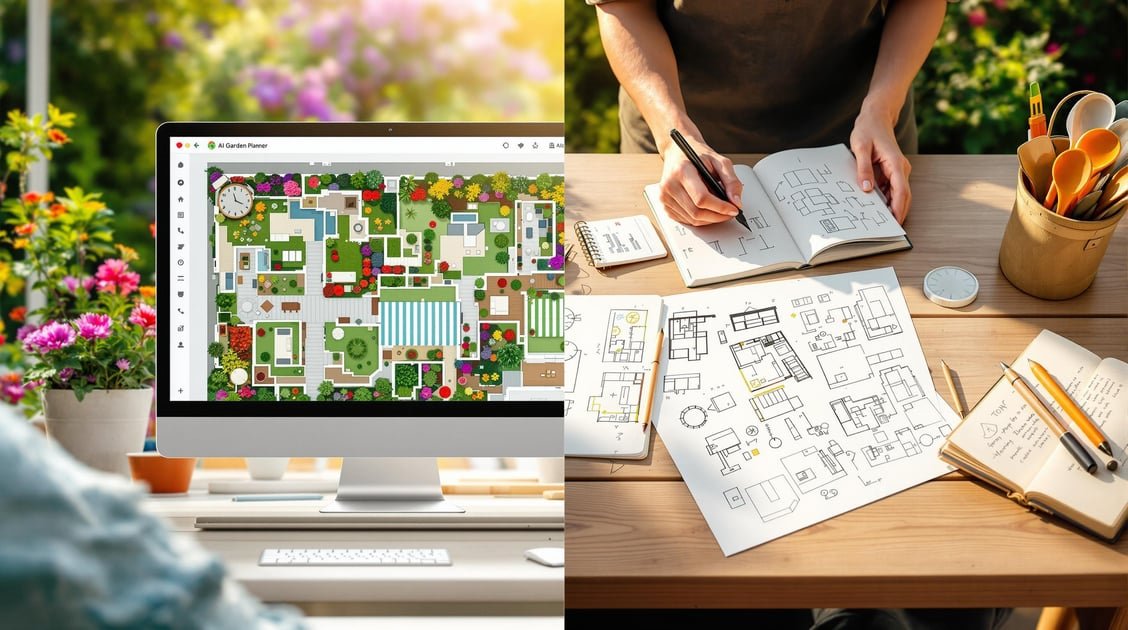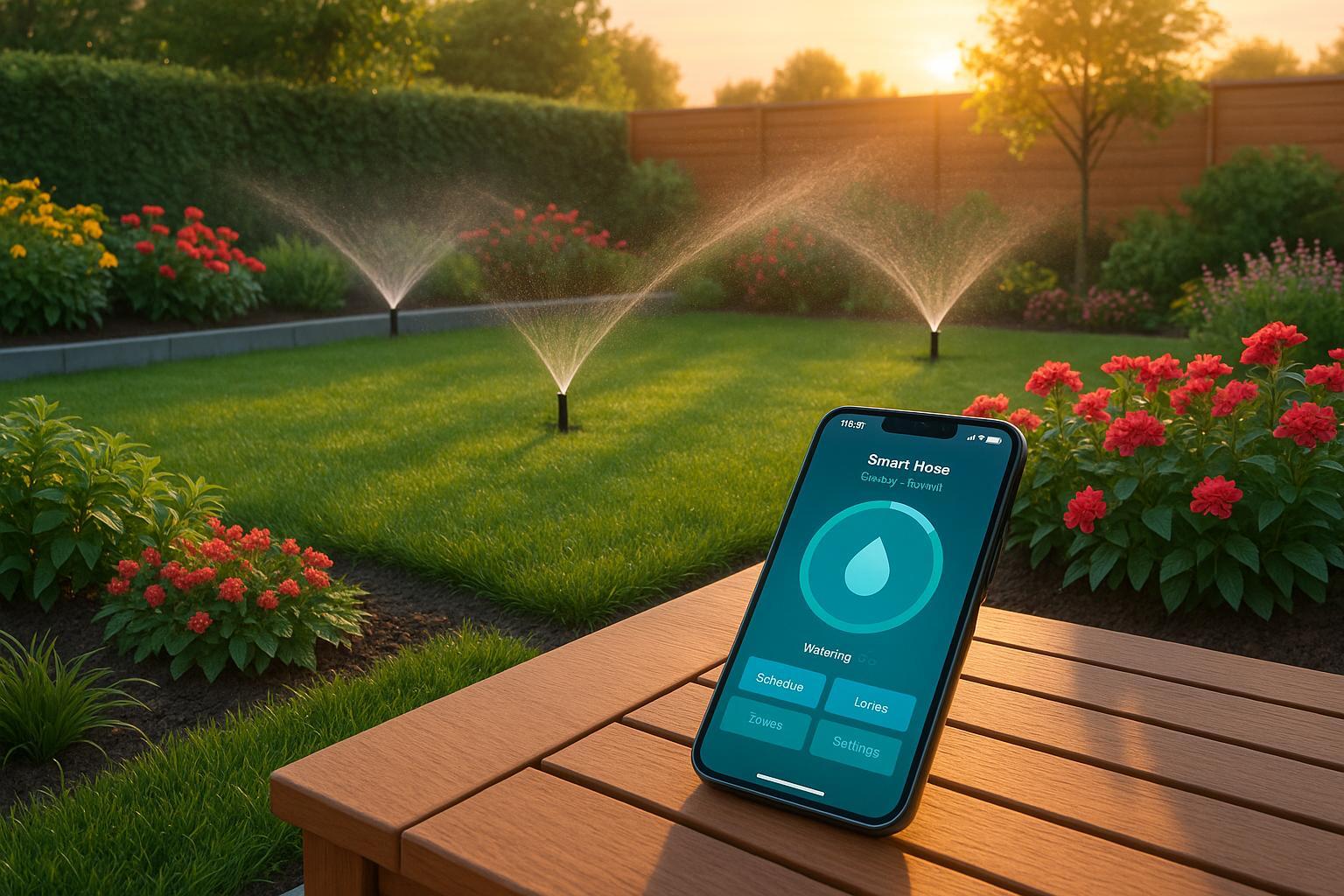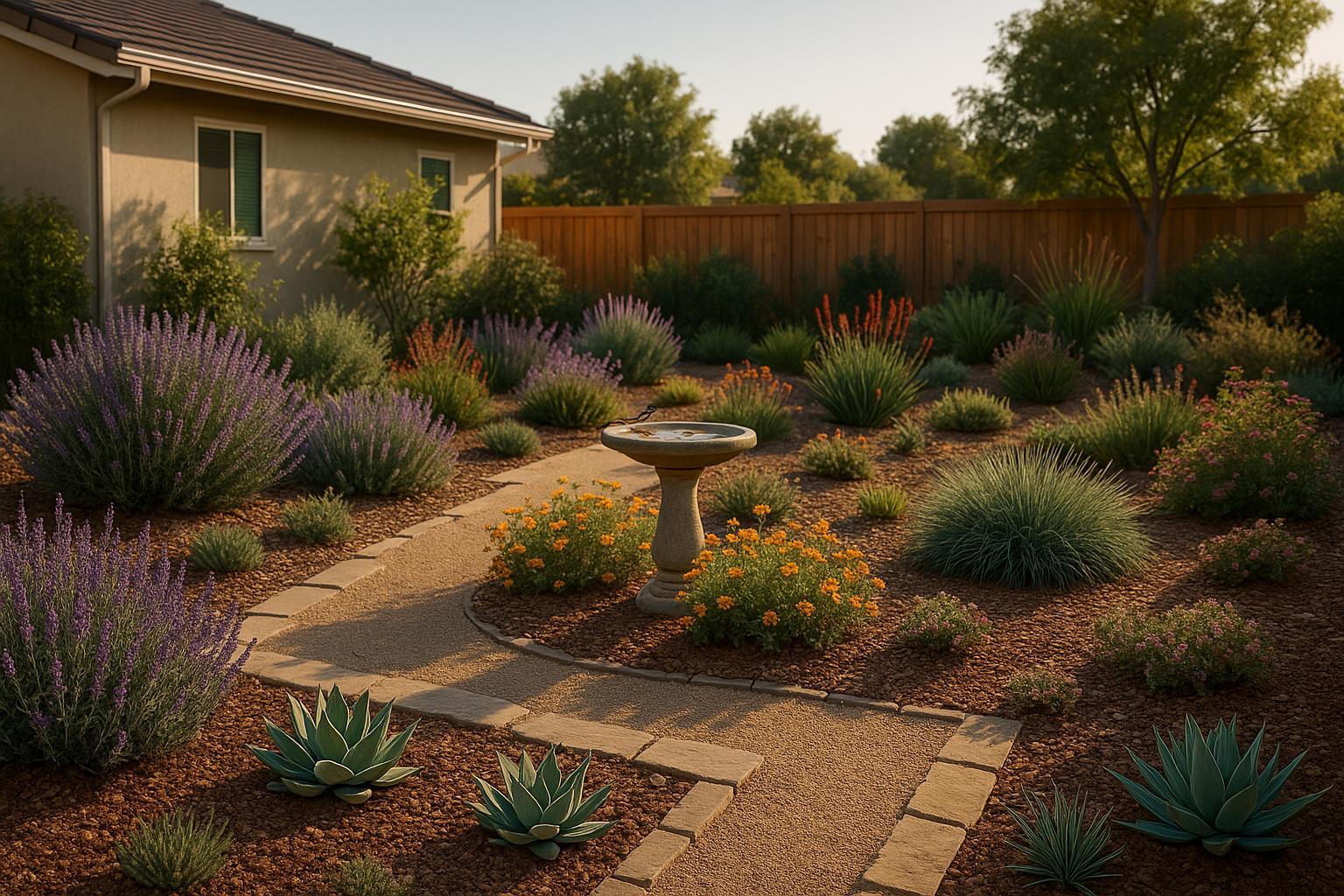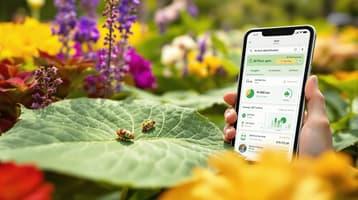AI Garden Planners vs. Traditional Methods

AI garden planners are reshaping how we approach gardening by providing quick, data-driven solutions for designing and maintaining gardens. They analyze local climate, plant needs, and seasonal changes to create personalized plans in minutes. Traditional methods, on the other hand, rely on hands-on experience, detailed record-keeping, and manual effort. Both approaches have their strengths and limitations.
Key Differences at a Glance:
- AI Garden Planners: Faster, easier, and ideal for beginners. They offer instant plant recommendations, automated schedules, and over 50 garden styles to choose from.
- Manual Methods: Time-intensive but rewarding for those who enjoy hands-on work. They build deep local knowledge and allow complete creative control.
Quick Comparison:
| Aspect | AI Garden Planning | Manual Planning |
|---|---|---|
| Design Time | Minutes | Hours or days |
| Plant Selection | Instant recommendations | Research-based |
| Weather Adaptation | Real-time updates | Personal tracking |
| Ease of Use | Beginner-friendly | Requires experience |
| Customization | Pre-designed styles | Unlimited but manual effort |
| Maintenance | Automated schedules | Manual tracking |
Takeaway:
AI tools save time and simplify gardening for everyone, while manual methods offer a deeply personal and hands-on approach. Combining both can give you the best of both worlds.
How to use AI to Make Garden Planning More Efficient (8 ...

How AI Garden Planners Work
AI tools are transforming garden planning by blending cutting-edge technology with gardening know-how. These tools create tailored designs that make planning easier and more efficient. Let’s break down the key components of how they work.
Smart Design and Plant Selection
AI garden planners take photos of your garden and turn them into professional-grade designs. They factor in details like:
- Local climate
- Garden size and layout
- Your personal style
- Seasonal changes
"Experience garden design reimagined - straightforward, lightning-fast, and user-friendly. Perfect for anyone seeking quick inspiration and professional results."
With over 50 garden styles to choose from, you can customize your outdoor space while ensuring the plants are suited to your environment.
Weather and Season-Based Planning
These tools use local weather data to create planting schedules tailored to your area. They consider:
- Temperature
- Rainfall
- Frost dates
- Growing season
- Sunlight exposure
The system updates planting schedules based on real-time weather changes. This means you’ll always know the best times to plant, care for, and harvest your garden. It’s like having a gardening expert on call, but without the guesswork.
Easy-to-Use Design Features
AI garden planners are designed to be simple yet powerful. Some standout features include:
| Feature | What It Does |
|---|---|
| Photo Upload | Visualize your garden’s potential instantly |
| Style Selection | Pick from 50+ styles or create your own |
| Plant Advisor | Get personalized plant ideas |
| Growing Guides | Detailed care instructions for every plant |
| High-Resolution Downloads | Save and share polished garden plans |
The platform also provides step-by-step growing guides tailored to your specific plants and local conditions. These guides make it easy to keep your garden thriving year-round with minimal effort.
sbb-itb-4d6a8dd
Manual Garden Planning Methods
Planning a garden the old-fashioned way relies on experience, observation, and a lot of hands-on work. While this approach offers insights developed over time, it demands much more effort compared to modern AI-based tools.
Learning from Past Results
Manual garden planning often starts with reviewing past gardening records. Gardeners track important details such as:
| Recording Element | Purpose | Typical Information |
|---|---|---|
| Weather Patterns | Monitoring climate | Daily temperatures, rainfall, and frost dates |
| Plant Performance | Tracking growth | Germination rates, harvest yields, and disease resistance |
| Seasonal Notes | Timing adjustments | Planting dates, bloom periods, and pest activity |
These records help gardeners make adjustments for each season, ensuring their garden evolves year after year.
Season-by-Season Planning
Traditional planning requires careful attention to the changing seasons.
Spring (March–May)
- Prepare and amend soil based on last year’s observations.
- Use frost dates to schedule seed starting.
- Create garden layouts with sketches or graph paper.
Summer (June–August)
- Monitor water needs daily.
- Check plant growth and health weekly.
- Adjust care routines as weather shifts.
Fall (September–November)
- Record harvest results and evaluate yields.
- Test soil to plan amendments for the next season.
- Note successes and challenges with different plants.
This seasonal approach builds on experience and detailed tracking, rather than relying on automated tools.
Required Work and Effort
Planning a garden manually involves consistent effort and attention. Gardeners need to:
- Create garden maps by hand.
- Research plant compatibility through books or local resources.
- Keep detailed logs of garden activities.
- Perform soil tests and calculate amendments themselves.
- Measure garden spaces and plan plant spacing manually.
Without the help of digital tools, gardeners depend entirely on their own knowledge to set planting schedules, design irrigation systems, rotate crops, and respond to changing weather. While this method has stood the test of time, it requires ongoing dedication and hands-on involvement.
🚀 Ready to Reinvent Your Garden?
Join thousands of homeowners who have transformed their gardens using our AI design tool. Upload one photo to explore endless possibilities.
Get your AI garden designs →Comparing AI and Manual Methods
In seasonal garden planning, AI tools and traditional manual methods offer distinct approaches. Let’s break down the key differences in design speed, plant selection, and how each adapts to seasonal changes.
Speed, Accuracy, and Ease of Use
AI garden planning tools and manual methods differ significantly in how quickly and efficiently they help you design and maintain a garden. Here's a quick comparison:
| Aspect | AI Garden Planning | Manual Planning |
|---|---|---|
| Design Time | Generates designs in minutes | Requires hours or even days for hand-drawn plans |
| Plant Selection | Provides instant recommendations based on location and climate | Involves researching books, guides, and local resources |
| Weather Adaptation | Uses integrated climate data | Relies on personal weather tracking and experience |
| Learning Curve | Easy to use, no prior design experience needed | Demands years of gardening knowledge |
| Customization | Offers 50+ pre-designed garden styles | Unlimited customization based on skill level |
| Maintenance Planning | Creates automated schedules | Requires manual tracking and upkeep planning |
These differences highlight the strengths and challenges of each approach, depending on your goals and expertise.
Strengths and Limits of Each Method
Both AI tools and manual methods bring their own advantages to garden planning.
Manual planning stands out for:
- Building personal knowledge through hands-on experience
- Allowing complete creative control
- Functioning without reliance on digital tools
- Deepening understanding of local conditions
However, it does have drawbacks:
- It’s time-consuming and labor-intensive
- Success relies heavily on the gardener’s expertise
On the other hand, AI tools simplify the process by saving time, offering data-driven insights, and reducing the need for advanced gardening knowledge. But they may lack the personal touch and adaptability that manual methods provide.
Ultimately, the best approach often combines both methods. Use AI tools for quick initial designs and data-driven insights, while relying on manual observation and adjustments for a more personal touch. This blend ensures efficiency without losing the benefits of hands-on gardening experience.
Conclusion
Key Takeaways
AI-powered tools are changing how gardeners plan for the seasons.
AI garden planners stand out by:
- Delivering professional designs in just minutes
- Offering plant suggestions tailored to specific locations
- Providing personalized growing guides
- Catering to beginners and experienced gardeners alike
Meanwhile, traditional gardening methods remain valuable for:
- Gaining practical, hands-on experience
- Building in-depth local knowledge
- Offering complete creative freedom
- Functioning without reliance on technology
What Lies Ahead
Combining seasonal insights from AI with the hands-on approach of traditional gardening creates a unique balance. This blend allows gardeners to enjoy the speed and precision of AI while still embracing the creative and personal aspects of gardening.
"Our AI Plant Advisor is a smart recommendation system that creates personalized garden plans based on your location, climate zone, gardening goals, and preferences." - AIGardenPlanner
AIGardenPlanner takes garden photos and transforms them into professional designs, offering over 50 styles to choose from. It shows how AI complements creativity rather than replacing it. Plus, its growing guides help gardeners maintain their spaces throughout the year.
Related posts
Related Articles

Best Apps for Smart Irrigation Control
Explore the best smart irrigation apps that optimize watering schedules to save water and reduce costs while keeping your garden healthy.

5 Steps to Create a Low-Water Garden
Transform your outdoor space with a low-water garden using simple steps that save money, reduce maintenance, and support ecosystems.

Symbolism in Chinese and Japanese Gardens
Explore the profound symbolism in Chinese and Japanese gardens, revealing how each element fosters meditation and harmony with nature.

Portable Gardens: A Versatile Option for Urban Dwellers
Learn about the benefits and types of portable gardens, as well as how to create and maintain your own. Discover how you can enjoy gardening all year round with these versatile and mobile gardens.

How AI Identifies Rare Pests in Gardens
Explore how AI tools transform pest identification and management in gardens with quick analysis and tailored insights.

Digital vs Traditional Garden Design: Pros and Cons
Explore the advantages and challenges of digital and manual garden design methods to find the best approach for your project.